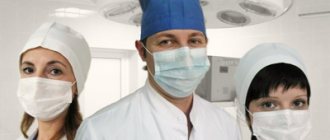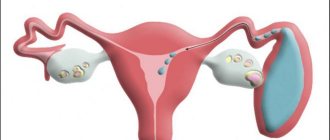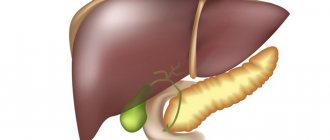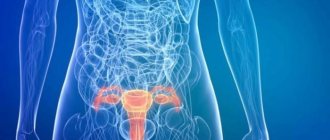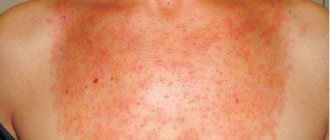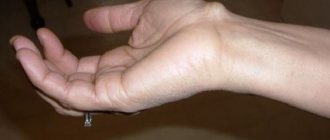Authorized Products
Diet for liver cancer includes:
- Day-old/dried wholemeal wheat flour bread, dry biscuits.
- Vegetarian soups with the addition of cereals (rice, oatmeal) and pasta made from premium flour without dressing.
- Lean varieties of beef, veal, turkey/chicken (without skin), rabbit, boiled/steamed in pieces or chopped (meatballs, meatballs, cutlets, dumplings, soufflé).
- Low-fat types of sea/river fish (perch, hake, pike, capelin, carp, cod, pike perch) steamed, boiled or baked).
- Raw/boiled grated vegetables: potatoes, pumpkin, zucchini, carrots, cauliflower, green peas, garden herbs, beets. The list of vegetables is reduced if they are poorly tolerated.
- Low-fat dairy/fermented milk products (cottage cheese, yogurt, kefir, low-fat cheese).
- Chicken eggs in the form of baked/steamed omelette or soft-boiled.
- Semi-liquid porridge made from oatmeal, buckwheat in water, white rice, boiled pasta.
- Refined vegetable oils, unsalted butter - in ready-made dishes.
- Ripe non-acidic raw/baked fruits/berries in pureed form, honey, dried fruits, marmalade, marshmallows, jam.
- Freshly squeezed fruit juices diluted with water, rosehip infusion, still table water, weak tea with lemon, compotes.
| Proteins, g | Fats, g | Carbohydrates, g | Calories, kcal | |
| zucchini | 0,6 | 0,3 | 4,6 | 24 |
| broccoli | 3,0 | 0,4 | 5,2 | 28 |
| cauliflower | 2,5 | 0,3 | 5,4 | 30 |
| potato | 2,0 | 0,4 | 18,1 | 80 |
| carrot | 1,3 | 0,1 | 6,9 | 32 |
| cucumbers | 0,8 | 0,1 | 2,8 | 15 |
| tomatoes | 0,6 | 0,2 | 4,2 | 20 |
| pumpkin | 1,3 | 0,3 | 7,7 | 28 |
| apples | 0,4 | 0,4 | 9,8 | 47 |
| dried apricots | 5,2 | 0,3 | 51,0 | 215 |
| dried apricots | 5,0 | 0,4 | 50,6 | 213 |
| prunes | 2,3 | 0,7 | 57,5 | 231 |
| buckwheat (kernel) | 12,6 | 3,3 | 62,1 | 313 |
| semolina | 10,3 | 1,0 | 73,3 | 328 |
| oat groats | 12,3 | 6,1 | 59,5 | 342 |
| white rice | 6,7 | 0,7 | 78,9 | 344 |
| jam | 0,3 | 0,2 | 63,0 | 263 |
| jelly | 2,7 | 0,0 | 17,9 | 79 |
| marshmallows | 0,8 | 0,0 | 78,5 | 304 |
| fruit and berry marmalade | 0,4 | 0,0 | 76,6 | 293 |
| paste | 0,5 | 0,0 | 80,8 | 310 |
| Maria cookies | 8,7 | 8,8 | 70,9 | 400 |
| honey | 0,8 | 0,0 | 81,5 | 329 |
| kefir 1.5% | 3,3 | 1,5 | 3,6 | 41 |
| curdled milk 1% | 3,0 | 1,0 | 4,1 | 40 |
| acidophilus 1% | 3,0 | 1,0 | 4,0 | 40 |
| cottage cheese 1% | 16,3 | 1,0 | 1,3 | 79 |
| cottage cheese 1.8% (low-fat) | 18,0 | 1,8 | 3,3 | 101 |
| boiled beef | 25,8 | 16,8 | 0,0 | 254 |
| boiled veal | 30,7 | 0,9 | 0,0 | 131 |
| rabbit | 21,0 | 8,0 | 0,0 | 156 |
| boiled chicken breast | 29,8 | 1,8 | 0,5 | 137 |
| boiled turkey fillet | 25,0 | 1,0 | — | 130 |
| chicken eggs | 12,7 | 10,9 | 0,7 | 157 |
| salmon caviar granular | 32,0 | 15,0 | 0,0 | 263 |
| flounder | 16,5 | 1,8 | 0,0 | 83 |
| pollock | 15,9 | 0,9 | 0,0 | 72 |
| blue whiting | 16,1 | 0,9 | — | 72 |
| cod | 17,7 | 0,7 | — | 78 |
| hake | 16,6 | 2,2 | 0,0 | 86 |
| pike | 18,4 | 0,8 | — | 82 |
| butter | 0,5 | 82,5 | 0,8 | 748 |
| sunflower oil | 0,0 | 99,9 | 0,0 | 899 |
| ghee | 0,2 | 99,0 | 0,0 | 892 |
| water | 0,0 | 0,0 | 0,0 | — |
| mineral water | 0,0 | 0,0 | 0,0 | — |
| black tea with milk and sugar | 0,7 | 0,8 | 8,2 | 43 |
| apricot juice | 0,9 | 0,1 | 9,0 | 38 |
| carrot juice | 1,1 | 0,1 | 6,4 | 28 |
| peach juice | 0,9 | 0,1 | 9,5 | 40 |
| pumpkin juice | 0,0 | 0,0 | 9,0 | 38 |
| rose hip juice | 0,1 | 0,0 | 17,6 | 70 |
| * data is per 100 g of product |
Diagnostics
Screening for liver cancer includes a history, blood tests, and palpation. Several methods are used to detect oncology:
- CT scan. It is carried out using a tomograph consisting of X-ray tubes. As a result of the scan, an image is displayed on the screen, which is then examined by a radiologist.
- Magnetic resonance imaging. MRI is no different from computed tomography, but scanning occurs from different angles, which gives a more detailed overview.
- Biopsy. During the procedure, a small portion of liver material is removed using a long needle, which is later examined under a microscope. Biopsy is one of the most accurate diagnostic methods.
- Ultrasonography. Using ultrasound scanners, the structure of the organ is examined. Ultrasonic waves are reflected, turn into electrical impulses and create an image on the screen.
- Alpha protein concentration level measurement. To do this, a small amount of venous blood is taken and then the amount of protein is determined.
This is interesting: Tests for liver cancer: tumor markers, their types, norms and interpretation of indicators
Types of focal formations in the liver
As noted earlier, focal formations can be malignant or benign. There are also infectious formations that are easiest to treat, as they form against the background of other diseases. To determine the type of tumor, a number of studies are required. The procedure includes both the delivery of tests and tissues for biopsy, and the use of hardware techniques.
Benign formations
Benign formations may not manifest themselves throughout the patient’s life. They are discovered accidentally during routine examinations or operations. Large formations cause heaviness in the right hypochondrium and pain during physical activity, preventing the patient from leading an active lifestyle.
Benign formations include:
- cysts;
- lipomas are tumors consisting of adipose tissue;
- adenomas - are mainly localized in blood vessels and consist of epithelial cells;
- hemangiomas are dense formations consisting of a large accumulation of vessels;
- hemartomas - look like volumetric formations, separated internally by partitions. Most often diagnosed in childhood;
- Cystodenomas are tumors consisting of many chambers lined with epithelium. Such formations produce a special mucus called mucin.
In rare cases, benign tumors can develop into malignant ones. That is why their detailed study is necessary
Regular monitoring of the dynamics of the therapeutic process is also important.
Malignant formations
Malignant tumors pose a direct threat to the health and life of the patient. They can be either primary or secondary. Primary tumors arise directly in the liver tissue, secondary tumors appear when cancer cells penetrate from other systems and organs through the blood and lymph. The liver is characterized by the development of secondary neoplasms. Among malignant focal formations there are:
- hepatoblastoma - the tumor consists of white-yellow nodes. Usually diagnosed in children younger than 12 months;
- angiosarcoma is a fast-growing tumor with the most unfavorable prognosis. The disease usually affects men over 60 years of age;
- cholangiocarcinoma is a tumor that affects the bile ducts of the liver;
- adenocarcinoma - pathology affects glandular epithelial cells;
- Hepatocellular carcinoma is an aggressive form of cancer that is difficult to treat and has a high mortality rate. Men over 50 years of age are at risk of developing the disease.
While benign tumors can go undetected for a long time, when the cancer process spreads, patients experience the following symptoms:
- a sharp deterioration in health;
- feeling of constant fatigue;
- weakness and drowsiness;
- signs of intoxication of the body;
- pallor or yellowness of the skin;
- temperature increase;
- vomit;
- decreased appetite;
- sudden weight loss;
- pain in the abdomen and right hypochondrium.
If the tumor has grown, the liver may protrude slightly under the skin on the right side. The organ can also be easily felt by palpation.
The prognosis of the disease largely depends on the stage. In the early stages of the disease, complete removal of the tumor and recovery of the patient is possible. In the later stages, the recovery rate drops sharply. In this case, even after complete removal of the tumor along with metastases, the patient will live from three to six years. If therapy is completely abandoned, patients live from six to twelve months.
Infectious focal formation in the liver
Infectious formations can occur against the background of tuberculosis, hepatitis, candidiasis, etc. If treatment was carried out by a qualified doctor, such neoplasms disappear without a trace. Since healthy cells begin to die when the liver is damaged, the patient may experience the following symptoms:
- decreased appetite;
- general malaise;
- drowsiness and chronic fatigue;
- causeless increase in body temperature;
- yellowing of the skin and whites of the eyes;
- weight loss;
- nausea;
- vomit;
- pain in the right hypochondrium;
- fever.
Such formations can be detected using ultrasound. Treatment of pathology is selected depending on the root cause
Proper and balanced nutrition is very important for patients with liver damage. Excluding certain food groups from the diet reduces the load on the organ
Prevention
Often, liver cancer does not appear out of nowhere; it is preceded by various negative factors. These include viral diseases, infections, exposure to various toxic substances, etc. All of them negatively affect the liver and lead to cancer.
To prevent this from happening, you need to limit yourself from harmful influences and engage in disease prevention:
Viral infections
The most susceptible to the growth of cancer cells are people who have had various hepatitis, especially from groups B and C. To combat this disease, vaccinations are carried out and contact with sick people is excluded. If the disease appears, then it is treated in a timely manner.
Quitting bad habits such as alcohol and smoking
In 22% of cases, liver cancer develops due to constant smoking. Drinking alcohol causes cirrhosis of the liver , and this disease soon causes cancer.
It is especially dangerous if, while smoking, a person also abuses alcohol.
Elimination of environmental influences
Carcinogens that are found in contaminated soil, water or air negatively affect the liver and immune system, which will not be able to suppress the development of the disease in time.
You should also avoid contact with harmful substances such as:
- Pesticides
- Polychlorinated biphenyls, etc.
If it is not possible to leave a harmful enterprise, then it is worth using all possible protection. Wear special masks, use protective clothing and gloves, etc.
When diagnosed with liver cancer, the patient should not despair. The main thing is to start treatment in the early stages. In this case, the chances of recovery increase. An optimistic attitude, support from loved ones and complete trust in the doctor will do their job, and the disease may recede.
General recommendations for adjusting the diet of cancer patients
Any diet will not help improve the digestive tract and well-being of a cancer patient if you do not adhere to the basic rules of a balanced diet.
Meal regimen. You need to eat at equal intervals between meals. Each serving of food contains 500 calories - this helps to avoid overeating. It will be difficult at first. The body is not used to receiving food on a schedule. The patient may feel hungry or, conversely, lack of appetite. It will take 1 week to develop a food habit. Breakfast. Even healthy people skip breakfast. The first meal starts your metabolism. Food should be high in calories, without sugar, rich in protein, fiber and slow carbohydrates. Drink plenty of fluids. To avoid dehydration, patients undergoing systemic therapy are advised to drink plain water daily. It helps maintain body temperature within normal limits, enhances metabolism, and removes toxins. The body needs fluid, which is calculated using a formula. Multiply the weight by 30 or 40 g of water, depending on how often you want to drink during the day. The result will be an individual need. Fiber is a dietary fiber containing large amounts of antioxidants.
They help normalize the functioning of the stomach, do not contain cholesterol, which is important for liver cancer, and do not retain fluid. Fiber is found in apples, pineapple, grapefruit
Chinese cabbage, other vegetables and fruits, and plant products are rich in fiber.
If you have liver cancer, stop drinking alcohol. Ethanol has a detrimental effect on the organ and enhances the effect of medications. The patient's cancer stage directly affects the variability of the diet and the amount of available products.
Principles of nutrition
For those who are sick, there is a simple “golden rule”: you need to sit down at the dinner table only when you feel hungry. There is no need to go on a fast or forcefully stuff yourself with hateful foods. When there is a need to eat a particular product, you need to prepare any healthy dish with its participation, which will cause pleasure after eating.
The nutrition of a sick person with metastases should be absolutely environmentally friendly. If there are tumors in the body, the antitoxic function of the liver is reduced or completely disabled, so the organ is not able to neutralize harmful additives that come with food: pesticides, stabilizers, preservatives, dyes, nitrates, nitrites, trans fats, GMOs. That is why you should carefully choose products when purchasing, and in order to reduce the nitrate content, you need to cut off the skin from the fruits and also soak them. You can buy a nitrate tester.
Basic principles of nutrition for cancer, stage 4 including:
- foods should be light, low in calories and easily digested by the body;
- if the patient loses weight due to a cancerous tumor, then the diet should include high-calorie foods high in protein (lean meat, fish and seafood, chicken eggs, cottage cheese products, cheese, dairy products);
- if there is no desire to eat, foods that stimulate the appetite are introduced into the menu - usually everything is sour: lemon juice, sauerkraut, sour apples;
- dishes are prepared exclusively by boiling. If necessary, food can be pureed in a blender or pureed;
- the amount of animal fats should be kept to a minimum;
- reducing the amount of salt and sugar. A sweetener is also excluded, since everything containing sugar “feeds” carcinoma;
- sufficient water supply - at least 1.5 liters of clean water, you can also additionally 0.5 liters of herbal teas and infusions, compotes and juices without sugar;
- You should not overeat so as not to overload the liver. You need to leave the table with a slight feeling of hunger;
- food must be chewed thoroughly;
- You need to eat often (5-6 times a day), but little by little.
At stage 4 of the disease (IVA, IVB), when there is no appetite and patients sharply lose weight, and with it strength, they are transferred to parenteral and enteral nutrition.
The first type of nutrition involves introducing nutrients directly into the venous system. The patient receives all the necessary nutrients according to an individually calculated scheme, only intravenously. He is simultaneously administered amino acids, fat emulsions, protein nutrition, vitamins and microelements (zinc, selenium and others).
With enteral nutrition, food is absorbed through a tube. For this purpose, the pharmaceutical and food industry has developed mixtures: Vinovex, Inpitan, Flexical, Peptamen. It can also be infant formula, for example, Nutrizon from Nutricia. They have a good composition with all the necessary vitamins and elements.
Strengthening the immune system
Increasing your own immune defense is the key to successful treatment. It is a scientifically proven fact that there is a significant decrease in the body’s defenses at the onset of the oncological process. This negatively affects the course of therapy and significantly worsens its quality. In order to restore and activate the body's immune forces, it is recommended to take:
- Birch sap, rose hips and green tea - their unique composition has a tonic effect, thanks to which it is possible to have a stimulating effect on the existing strength reserves;
- Watermelon juice - it is recommended to take it before meals, and to enhance the effect you can add a spoonful of honey;
- Beetroot juice is the oldest recipe, the effectiveness of which has been proven over the years.
Treatment with soda
Soda is a unique product that has numerous beneficial properties. Therefore, treatment of liver cancer with folk remedies is always accompanied by its use. The use of soda allows you to create an environment in the body that has a detrimental effect on malignant neoplasms and does not allow it to develop in the future. The best recipes are:
- Add half a tablespoon to lemon juice and pour drinking water over the resulting mixture. The healing drink should be drunk twice a day 30 minutes before meals.
- Mix soda with honey in a ratio of 1:3. Place this mixture over low heat and heat, then place in the refrigerator until completely cooled. It is recommended to take the medicine in unlimited quantities throughout the day.
- Combine soda with heated milk in a 1:2 ratio. The resulting medicine is drunk at once, as this improves the absorption capacity of the intestine.
Treatment with oats
Oats combine many vitamins and beneficial microelements that have a beneficial effect on the patient’s health. The most optimal use of oats is to make a decoction from it. It is recommended to prepare it daily, as when fresh it contains maximum benefits.
To do this, just take one glass of fresh grains and fill them with clean drinking water (but not more than 0.5 liters). Then place the container on medium heat and leave for 25-30 minutes. After bringing the mixture to a boil, remove it from the heat, wrap it tightly with a thick blanket and place it in a dark place at room temperature. It is necessary to insist for 2 hours, then carefully filter the mixture through gauze. Take the decoction three times a day 30 minutes before meals.
Types and forms of pathology
To describe this type of oncological process, different classifications are used in medical practice. The first of them is based on the origin, according to it there are tumors: epithelial (as the name implies - formed by a mutation of epithelial cells) and mesenchymal (grown as a result of a malignant process in the cells of blood vessels).
Epithelial include:
- hepatocellular cancer (formed by liver cells);
- cholangiocarcinoma (developed in the epithelium of the bile ducts);
- hepatoblastoma (of embryonic origin);
- undifferentiated cancer;
- cystadenocarcinoma of the biliary tract.
Mesenchymal include:
- angiosarcoma (a malignant process that develops from endothelial cells and vascular perithelium);
- epithelioid hemangioendothelioma (resulting from a mutation of endothelial cells and is a rare type of angiosarcoma, characterized by a low degree of malignancy);
- neoplastic hemangioendothelioma (the tumor process develops from vascular endothelial cells).
Quite rare, but there are malignant tumors of mixed origin and other types of oncology of this localization (leiomyosarcoma, squamous cell carcinoma, mesenchymal malignant neoplasms of the liver of unknown origin, teratomas).
Considering primary cancer developing in liver tissue, three forms of pathology are distinguished:
| Nodal | With it, separate tumor foci are formed, differing in size (from millimeters to several centimeters), the liver itself is also enlarged. It is the most common of all forms of hepatocellular carcinoma and is almost always accompanied by cirrhosis. |
| massive | The tumor in this case is large in size, mainly localized on the right side of the organ, and is very rarely accompanied by cirrhosis |
| Diffuse | The liver, which at the same time retains its size, is filled with numerous malignant neoplasms that radically change its structure. This is the rarest form, it is diagnosed in 10-12% of cases of cancer of this localization and is accompanied by cirrhosis. |
Principles of nutrition
The liver is an important organ involved in the process of filtering blood from waste, toxins and breakdown products. In case of disturbances in functioning, in particular, this concerns the development of cancer processes, an accumulation of harmful substances occurs in the body
This is why it is so important to properly create a diet that will consist only of healthy foods.
Patients with liver cancer should remember that they should only eat food when they feel hungry. There is no need to force yourself to eat or, conversely, subject your body to starvation.
Products should be healthy, enriched with all nutrients and vitamins. The menu should not contain difficult-to-digest foods that create additional stress on the liver.
On this topic
When eating food, you must adhere to simple principles, which are as follows:
- limit fluid intake per day;
- eat at least five times a day;
- reduce consumption of table salt and hot seasonings;
- eat small portions every 2-3 hours.
If the course of cancer is accompanied by vomiting and stool disturbances (diarrhea), then it is allowed to increase the consumption of salt and clean water.
Very often the pathological process leads to rapid loss of body weight. In this case, to maintain a weakened body, you need to eat more vegetables and animal proteins. Chicken eggs are a product that contains many useful microelements. However, you can eat no more than three of them per week.
It is important that the diet is natural, complete and varied. For malignant liver pathologies, any meal should begin with a raw product
Only then can you eat food prepared by stewing or boiling.
Overeating should not be allowed. At the end of the meal, there should be a slight feeling of hunger, since the digestive system should not be overloaded. Food should be thoroughly chewed, which will facilitate the process of its absorption in the intestinal tract.
It is recommended to supplement therapeutic nutrition after surgery with other therapeutic measures. Moderate physical activity and proper rest play an equally important role. After conducting research, scientists have proven that gymnastics helps to increase the period of remission and strengthen the defenses of the human body.
Diet for tumors with metastasis
If stage 4 liver cancer is diagnosed and the patient is inoperable, nutritional therapy will be slightly different from what is prescribed in the early stages of the disease.
First of all, you need to accept the fact that the disease will progress. In addition, rapid weight loss occurs, which cannot be stopped, and appetite may completely disappear.
First of all, when organizing dietary nutrition for a tumor that begins to metastasize, it is not recommended to force the patient to eat. In addition, it is prohibited to take drugs that stimulate appetite in this case. You also need to remove foods high in fat and spicy seasonings.
Proteins should be consumed in minimal quantities. It is recommended to eat more fruits, vegetables and bread in small doses.
How to increase your life expectancy
There are not many methods that can increase life expectancy and improve its quality. After a complete examination, the doctor determines the stage of the oncological process, which determines the treatment tactics.
Treatment
Today, there are several approaches to the treatment of liver carcinoma:
- surgical intervention;
- chemotherapy;
- irradiation.
The extent of the operation depends on the extent of the malignant process. This can be either resection of the affected organ or liver transplantation.
Chemotherapy has three directions, namely:
- embolization Its essence is to inject the drug into the blood vessel feeding the tumor. The drug is used in the form of microcapsules or an oil solution. It is considered the most effective method, as it makes it possible to block the delivery of blood to the tumor site and slow down the progression of the malignant process;
- infusion, when a chemotherapy drug in liquid form is injected into a vessel. The disadvantage of this method is that the drugs act not only on the tumor site, but also on healthy tissue. Among the adverse reactions, it is worth highlighting decreased immunity, hair loss, stomatitis and intestinal dysfunction;
- ablation The main goal of the method is to destroy the tumor by injecting the drug directly into its tissue.
Diet
Proper nutrition plays an important role in treatment. It should be light, but at the same time fully cover the body’s needs, thereby preventing weight loss. The diet includes:
- fractional meals. The interval between meals should not exceed two hours;
- drinking plenty of fluids, which makes it possible to prevent dehydration;
- liquid and puree dishes;
- methods of preparing food - steaming, baking, boiling or stewing;
- warm dishes (neither cold nor hot);
- the emphasis should be on pureed soups, vegetables, fruits, low-fat milk and cereals (buckwheat, wheat, rice, oatmeal);
- Pork, lard, rich broths, fatty fish, chocolate, coffee, offal, sweets with cream, fresh baked goods, canned food, sausages, onions, garlic, spicy seasonings and pickles are prohibited.
After treatment, it is important to undergo regular examinations, which is necessary to control the oncological process. In addition, it is necessary to monitor the functioning of internal organs, the level of hemoglobin, red blood cells, platelets and leukocytes, especially during chemotherapy
Stages of the malignant process
The development of the malignant process begins with the so-called precancerous condition, in which the rudiments of pathological changes only appear in hepatocytes. Precancer does not have any symptoms and if it is not detected by chance, after a short time the process of active malignancy will begin in the cellular structures of the liver parenchyma. Experts note 3 curable stages of hepatocellular liver cancer.
An illness detected at one of these stages is more or less curable, and the patient has a chance of significantly prolonging life while maintaining its quality:
- Stage 1 hepatocellular liver cancer is most often a single tumor, which is relatively small in size - its diameter does not exceed 2 cm. It does not compress the surrounding tissues, so a person does not feel any discomfort or pain. There are also no germinations into vascular walls and lymph nodes. The prognosis for the cure of such a tumor is the most favorable - with adequate therapy, many patients have a chance of not only achieving long-term remission, but completely forgetting about the dangerous disease.
- Hepatocellular liver cancer at stage 2 is characterized by the appearance of multiple foci reaching a diameter of 5 cm and involvement of vascular walls in the pathological process. The cancer patient begins to feel negative symptoms, which intensify every day. At this stage, complete cure is still possible, although it is rare in clinical practice.
- At stage 3, hepatic liver cancer goes through 3 substages - A, B, and C. They have slight differences in the extent of the metastatic process. At substage A, the walls of blood vessels are destroyed by abnormal cells, but they do not yet enter the bloodstream and are not spread throughout the body, B - the tumor structure grows into the abdominal cavity and affects organs in the immediate vicinity, C - metastases appear in regional lymph nodes.
- If the oncological process is not detected at these stages of development, it goes into the final, non-curable stage 4. Symptoms of hepatocellular liver cancer become very painful, so to improve the quality of life in the last months or weeks, patients are given courses of palliative therapy.
Folk remedies
Oncology is the scourge of our time . Despite the fact that today developments are being made regarding the development of new systems, drugs and mechanisms are used aimed at combating cancer cells, this still does not allow us to talk about the effectiveness of oncology treatment.
Is it possible to cure cancer using traditional medicine? Desperate patients, or those who are afraid to undergo “experiments” from medicine, often resort to traditional medicine, although it is usually ineffective. This is a waste of time that reduces the chances of recovery. If the patient insists too much, you can supplement the main therapy with methods from traditional medicine, although this has not been confirmed.
You can resort to treating (as a supplement) cancer with watermelon juice. Take a decoction of oats or propolis. However, everything must be combined with the main therapy. Learn more about additional traditional ways to fight cancer.
Fasting during chemotherapy gives positive results
An oncological diagnosis is not a death sentence. There are a lot of auxiliary methods of fighting cancer. Intermittent fasting is considered beneficial for the body of a healthy person, but we will try to understand further how it affects a patient with liver cancer. Treatment of the patient consists of surgery, chemotherapy, radiation and other traditional methods of fighting carcinoma. Before this, it is advisable to add a proper diet and fasting.
It has been scientifically proven that people with diabetes have an increased chance of developing cancer. Cancer cells feed on glucose, so a diet limiting sweets has a positive effect on the liver. When undergoing chemotherapy, patients fast to ensure that the radiation is more effective on the tumor.
Chemotherapy is part of the treatment for a cancer patient, and we recommend trying intermittent fasting. You need to choose an hour interval during which you will stick to your diet. The rest of the time, eat your usual food. Choose any time, depending on the rise. If you wake up early, start fasting from the moment you wake up and end exactly 8 hours later, or you can have breakfast and then not eat anything throughout the day.
This has a positive effect on the removal of toxins and aggressive drug residues from the body. Beneficial substances that destroy cancer cells work better during fasting.
The main rules of short-term fasting:
- drink water throughout the day;
- the body needs to be prepared in advance;
- two weeks before the fasting day, exclude burgers, smoked meats, and canned food from your diet;
- You can’t eat a lot after fasting; it’s better to start your usual diet with a light salad, low-fat yogurt, and oatmeal.
This technique cannot be used if you have diseases of the digestive system. Following proper nutrition, intermittent fasting, and traditional methods of treating liver cancer increases the chances of survival.
«>
Treatment
Therapy for a liver tumor is prescribed depending on the nature of the tumor, the stage of the disease and the individual characteristics of the patient’s body. In the first stages, surgery has a good effect:
- If the tumor is detected at stage 1, then resection can be performed to remove the affected part of the organ. In this case, most of the liver is preserved, and the tumor is completely eliminated.
- If a hemihepatectomy is prescribed, the surgeon removes half of the organ. Over time, the organ will restore its previous size.
- Before surgery or if the patient is intolerant to general anesthesia, which makes surgical intervention impossible, radiofrequency ablation is used. This procedure involves destroying liver cancer cells using radio waves. To achieve a successful result, it is done several times.
Chemotherapy and radiation therapy may also be prescribed. Combining these methods gives a good prognosis for recovery.
Radiation therapy
There are 3 main methods of treating cancer - surgery, radiation therapy and chemotherapy.
Innovative solutions at TomoClinic
TomoClinic offers effective treatment of cancerous tumors using radiation therapy with minimal impact on healthy cells. Tomotherapy has been used abroad for many years, but for the first time it is available in Ukraine. Tomotherapy is prescribed in more than 70% of cancer treatment cases.
Radiation therapy treatment
Radiation therapy is a method of treating cancer using ionizing radiation. The quality of therapy depends on the equipment on which it is performed, as well as on pre-radiation preparation. In our clinic we use a modern linear accelerator, which gives a chance for a full life after treatment.
Chemotherapy
A number of chemicals are used to fight cancer cells. But due to the fact that the body quickly gets used to them, they are ineffective. To avoid this, a special method is used - infusion, which is performed through the hepatic artery. This way the chemical penetrates all liver cells and does not affect other tissues and organs.
Common side effects of this procedure include nausea, vomiting, bleeding, hair loss and general weakness. To reduce the consequences, good clinics use special medications.
The emergence and development of primary education
An example of what a tumor in the liver looks like
As a result of exposure to a number of unfavorable factors, the renewal process of cells that make up the liver structure is disrupted. They begin to divide uncontrollably without reaching a mature state. As a result, an anomaly is formed, called a “tumor,” which continues to increase in size (after all, cell division does not stop). Gradually, immature mutant cells disrupt the functioning of the organ, leave the localization site and move to adjacent healthy tissues with further active spread throughout the body.
Primary liver cancer (or hepatocellular carcinoma) is a malignant neoplasm that develops as a result of mutation of hepatocytes (parenchyma cells). Those cases where the lesion occurred due to cancer cells from another location entering the tissue (mainly from an intestinal tumor) are called secondary cancer, and it occurs much more often than primary cancer.
If we analyze various statistical data, we will see that hepatocellular carcinoma accounts for up to 3% of all types of malignant tumors occurring in the body. In terms of prevalence, liver cancer ranks fifth in the male population and eighth in women. The pathological process is characterized by aggressiveness and a high risk of death, and therefore requires increased attention and urgent measures of adequate therapy.
Diagnosis of hepatocellular liver cancer
The success of therapy depends on how timely the disease was detected and how correctly the final diagnosis was made. An experienced hepatic oncologist can identify the first signs that accompany almost any liver cancer during the initial examination during palpation. Hepatocellular carcinoma can be suspected by the presence of palpable, nonspecific seals in the area of the secretory organ and the presence of clearly visible blood vessels on the greatly enlarged abdomen.
If a person, in addition to alarming symptoms, also has these signs, he is immediately prescribed a specific diagnosis, consisting of a number of studies:
- Lab tests. The patient's blood is taken for tumor markers, and a biochemical study is also carried out. The presence of a specific protein in the biological fluid, which is a product of the vital activity of abnormal cells of the liver parenchyma, confirms that oncology has begun to develop in it.
- Hardware imaging studies. PET, MRI, CT and ultrasound allow us to assess the size of the tumor and determine the extent of its spread. In addition, using these diagnostic techniques, secondary malignant foci are detected quite well.
- Histology. Examination of biopsy material (the thinnest section from a suspicious area of the liver parenchyma) under a microscope finally confirms the alleged diagnosis.
Additional diagnostic techniques are used to clarify the degree of metastasis. For this purpose, chest radiography is used, which detects metastases in the lungs, scintigraphy, which detects bone lesions, and contrast angiography, which studies the vascular network for secondary malignant foci.
Prognosis for signet ring cell cancer
In general, signet ring cell carcinoma slightly worsens the prognosis for the patient. It behaves more aggressively and is more difficult to treat compared to other histological types of tumors. The prognosis depends very much on the stage at which the disease is diagnosed. Thus, for local gastric cancer (only the primary tumor without foci in the lymph nodes and distant metastases), the five-year survival rate is 69%, and for metastatic cancer it is only 5%. Other factors also play a role.
Thanks to the capabilities of modern oncology, we can help a patient with any stage of signet ring cell cancer. Even if the disease is incurable, it is often possible to slow down its progression, relieve the patient of painful symptoms, and prolong his life. At the Medicine 24/7 clinic, the most modern drugs are used for this purpose.
The material was prepared by the deputy chief physician for medical work of the Medicine 24/7 clinic, candidate of medical sciences Sergeev Petr Sergeevich.
Sources:
- Salnikova M. M., Gevorkyan Yu. A., Kuznetsova M. S., Maleiko M. L., Grechkin F. N., Ilchenko S. A. Modern approaches to the treatment of signet ring cell cancer of the stomach // Siberian Journal of Oncology. 2010. No. Appendix 1.
- Nepomnyashchaya E. M., Kirichenko Yu. G., Gavrilova M. A. Features of the morphological picture of signet ring cell cancer of the stomach // Siberian Journal of Oncology. 2009. No. S2.
- Nered S.N., Klimenkov A.A., Perevoshchikov A.G. Clinical and morphological features of signet ring cell gastric cancer // Vestn. RONC named after. N. N. Blokhin RAMS. 2004. No. 3.
Fully or partially limited products
The diet of patients with liver cancer includes the following exceptions:
- Fatty types of red meat, fatty dairy products, meat, poultry (goose and duck), fatty fish, sausages, canned meat/fish, cooking and animal fats.
- Any fried food, including fried meat/fish, pies, pancakes, pancakes, cheesecakes.
- Rye bread, pastries, any kind of dough, easily digestible carbohydrates (chocolate, cream products, sweets, cakes, ice cream).
- First courses in concentrated meat/fish broth, borscht, cold soups (okroshka).
- Some types of cereal products (corn, pearl barley, millet, barley groats).
- Spicy dishes and spices, seasonings, herbs, as well as various kinds of sauces, pickles, marinades.
- Vegetables with coarse fiber (radish, turnip, rutabaga, white cabbage, eggplant, radish), mushrooms, legumes, garlic and onions.
- Carbonated drinks, black coffee, cocoa, grape juice, alcoholic beverages.
| Proteins, g | Fats, g | Carbohydrates, g | Calories, kcal | |
| canned vegetables | 1,5 | 0,2 | 5,5 | 30 |
| eggplant | 1,2 | 0,1 | 4,5 | 24 |
| swede | 1,2 | 0,1 | 7,7 | 37 |
| peas | 6,0 | 0,0 | 9,0 | 60 |
| cabbage | 1,8 | 0,1 | 4,7 | 27 |
| bulb onions | 1,4 | 0,0 | 10,4 | 41 |
| chickpeas | 19,0 | 6,0 | 61,0 | 364 |
| salad pepper | 1,3 | 0,0 | 5,3 | 27 |
| parsley | 3,7 | 0,4 | 7,6 | 47 |
| radish | 1,2 | 0,1 | 3,4 | 19 |
| white radish | 1,4 | 0,0 | 4,1 | 21 |
| dill | 2,5 | 0,5 | 6,3 | 38 |
| beans | 7,8 | 0,5 | 21,5 | 123 |
| horseradish | 3,2 | 0,4 | 10,5 | 56 |
| spinach | 2,9 | 0,3 | 2,0 | 22 |
| sorrel | 1,5 | 0,3 | 2,9 | 19 |
| bananas | 1,5 | 0,2 | 21,8 | 95 |
| grape | 0,6 | 0,2 | 16,8 | 65 |
| mushrooms | 3,5 | 2,0 | 2,5 | 30 |
| marinated mushrooms | 2,2 | 0,4 | 0,0 | 20 |
| nuts | 15,0 | 40,0 | 20,0 | 500 |
| raisin | 2,9 | 0,6 | 66,0 | 264 |
| seeds | 22,6 | 49,4 | 4,1 | 567 |
| dates | 2,5 | 0,5 | 69,2 | 274 |
| corn grits | 8,3 | 1,2 | 75,0 | 337 |
| millet cereal | 11,5 | 3,3 | 69,3 | 348 |
| barley grits | 10,4 | 1,3 | 66,3 | 324 |
| pasta | 10,4 | 1,1 | 69,7 | 337 |
| vareniki | 7,6 | 2,3 | 18,7 | 155 |
| dumplings | 11,9 | 12,4 | 29,0 | 275 |
| buns | 7,9 | 9,4 | 55,5 | 339 |
| Rye bread | 6,6 | 1,2 | 34,2 | 165 |
| pastry cream | 0,2 | 26,0 | 16,5 | 300 |
| shortbread dough | 6,5 | 21,6 | 49,9 | 403 |
| ice cream | 3,7 | 6,9 | 22,1 | 189 |
| chocolate | 5,4 | 35,3 | 56,5 | 544 |
| mustard | 5,7 | 6,4 | 22,0 | 162 |
| mayonnaise | 2,4 | 67,0 | 3,9 | 627 |
| sugar | 0,0 | 0,0 | 99,7 | 398 |
| milk 4.5% | 3,1 | 4,5 | 4,7 | 72 |
| cream 35% (fat) | 2,5 | 35,0 | 3,0 | 337 |
| whipped cream | 3,2 | 22,2 | 12,5 | 257 |
| sour cream 30% | 2,4 | 30,0 | 3,1 | 294 |
| parmesan cheese | 33,0 | 28,0 | 0,0 | 392 |
| fatty pork | 11,4 | 49,3 | 0,0 | 489 |
| salo | 2,4 | 89,0 | 0,0 | 797 |
| bacon | 23,0 | 45,0 | 0,0 | 500 |
| smoked sausage | 9,9 | 63,2 | 0,3 | 608 |
| smoked chicken | 27,5 | 8,2 | 0,0 | 184 |
| duck | 16,5 | 61,2 | 0,0 | 346 |
| smoked duck | 19,0 | 28,4 | 0,0 | 337 |
| goose | 16,1 | 33,3 | 0,0 | 364 |
| smoked fish | 26,8 | 9,9 | 0,0 | 196 |
| black caviar | 28,0 | 9,7 | 0,0 | 203 |
| salmon caviar granular | 32,0 | 15,0 | 0,0 | 263 |
| salmon | 19,8 | 6,3 | 0,0 | 142 |
| canned fish | 17,5 | 2,0 | 0,0 | 88 |
| salmon | 21,6 | 6,0 | — | 140 |
| trout | 19,2 | 2,1 | — | 97 |
| animal fat | 0,0 | 99,7 | 0,0 | 897 |
| cooking fat | 0,0 | 99,7 | 0,0 | 897 |
| dry red wine | 0,2 | 0,0 | 0,3 | 68 |
| vodka | 0,0 | 0,0 | 0,1 | 235 |
| beer | 0,3 | 0,0 | 4,6 | 42 |
| soda water | 0,0 | 0,0 | 0,0 | — |
| cola | 0,0 | 0,0 | 10,4 | 42 |
| instant coffee dry | 15,0 | 3,5 | 0,0 | 94 |
| sprite | 0,1 | 0,0 | 7,0 | 29 |
| grape juice | 0,3 | 0,0 | 14,0 | 54 |
| * data is per 100 g of product |
Symptoms and manifestations of hepatocellular liver cancer
Hepatocellular liver cancer, depending on the stage of development and metastatic formations, has various symptoms. Early stage tumors with small tumors can be diagnosed using standard ultrasound diagnostic procedures. As a rule, during this period patients do not feel any discomfort.
When the cancer actively progresses, an increase in the size of the organ is observed, patients complain of pain in the right hypochondrium, general weakness and malaise. Sharp weight loss and early satiety indicate the growth of a malignant tumor.
Also, the progression of cancer is indicated by jaundice, which appears as a consequence of obstruction of the bile ducts. In frequent cases, it is accompanied by hemorrhage in the gastrointestinal tract. There is also diarrhea, loss of appetite, bone pain, shortness of breath, and in the case of a metastatic process, chest pain and cough. Patients with cirrhosis often develop ascites.
A fatal complication of hepatocellular liver cancer is abdominal bleeding as a consequence of tumor rupture. Or fever that occurs against the background of central liver necrosis. These symptoms are accompanied by bloody vomit and blood in the stool.
Impaired liver function or venous congestion in the gastrointestinal tract are clinical signs of the disease. In this case, patients experience spider veins on the skin and dilated veins in the navel area.
Causes
The appearance of oncological pathology is always preceded by changes in cells, because neoplasms cannot arise on healthy tissues. But weakened liver cells can become the basis of a tumor. The causes of liver cancer should be considered in more detail:
- Chronic viral hepatitis. Cancer most often develops in people diagnosed with hepatitis B. This virus is found in 80% of patients with liver cancer.
- Cirrhosis. The most dangerous is the large nodular form of this disease. Liver cirrhosis is detected in 70% of people with liver cancer, and the cancer develops very actively.
- Hemochromatosis. This pathology causes high iron deposition in various organs.
- Cholelithiasis. Stones in the bile ducts provoke inflammation. The cells around the stones can become cancerous.
- Syphilis. Syphilitic infection provokes the degeneration of liver cells into malignant ones.
- Diabetes. With this disease, metabolic processes fail. Combined with bad habits, this factor increases the risk of developing cancer.
- Parasites. Worms that live in the liver poison the organ with secretions, which contributes to the degeneration of cells.
- Alcohol abuse and smoking. Alcoholic drinks in large quantities destroy liver cells, and nicotine causes their mutation.
- Toxic substances released by fungi are aflatoxins. Mold affects corn, peanuts, soybeans, rice and wheat. If you systematically eat affected foods, the risk of developing cancer will increase.
- Taking anabolic steroids. Athletes often use testosterone-based hormones without the knowledge of a doctor. These drugs have a negative effect on the liver.
- Heredity. People exposed to these factors are at greater risk of developing cancer than others. Therefore, they should undergo a comprehensive examination annually.
Hepatoprotectors help prevent the development of cancer.
Forming a table for liver cancer - the main points that should not be missed
The therapeutic diet is aimed at sparing the effect of foods on the liver and other organs of the gastrointestinal tract. With the development of liver oncology, the organ no longer fully copes with its function, so it is necessary to minimize the influence of negative factors on it.
Adhering to a diet does not mean limiting your food intake or eating foods that your body cannot tolerate. You need to create a diet in which you can eat a variety of foods rich in complex carbohydrates, protein, fiber and with minimal fat.
All dishes are steamed, boiled or baked. The products are cut into small pieces or blended in a blender. It is acceptable to eat 4 to 6 times a day, but no less. The food should be crushed; if these rules are followed, there is a minimal load on the diseased liver. General recommendations are useful for pancreatic and gastrointestinal cancer.
Prohibited foods in the diet of a cancer patient
The menu of those suffering from liver cancer should not include many foods that contain cholesterol, fats, and artificial additives.
If the disease has just begun, eliminate or reduce consumption of the following foods:
- meat of goose, duck, pig;
- mackerel, eel, halibut;
- other fatty meats and fish;
- sausage, frankfurters, sausages;
- spicy, fried, smoked dishes;
- offal: liver, lungs, heart, stomachs, brains;
- home canned food, canned food, pickled vegetables;
- drinks containing caffeine;
- sparkling water, vinegar, ketchup, mustard, horseradish;
- chocolate, chocolate candies, flour, cocoa, ice cream;
- mushrooms, mushroom sauces and broths prepared with them;
- radishes, onions, garlic, rhubarb and radishes.
Repeatedly a week you are allowed to eat dry biscuits, lean buns, and other baked goods without butter. Consuming salt in large quantities in case of secondary cancer is strictly prohibited.
Healthy foods on the menu for liver cancer patients
The digestive tract of a liver cancer patient is vulnerable and requires a balanced diet. Products and dishes useful for cancer patients:
- apples, pears, bananas, plums, prunes, pineapples;
- non-acidic varieties of berries;
- buckwheat, oatmeal, rice porridge;
- beets, spinach, avocado, flaxseeds;
- pasta, vermicelli, pasta;
- marshmallow, marshmallow, biscuits; yesterday's bread, crackers, bagels, marmalade;
- natural fruit and vegetable juices, green and black tea;
- parsley, dill, laurel in limited quantities.
Dairy products at stage 3 of cancer are eaten with the permission of the treating oncologist. Select people suffer from lactose intolerance, so you can’t buy yoghurt, cottage cheese, sour cream even if they are very beneficial.

